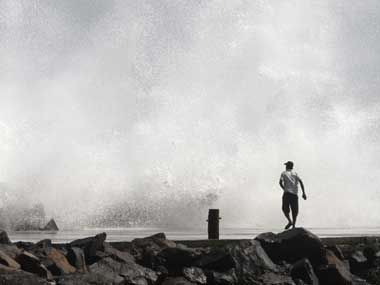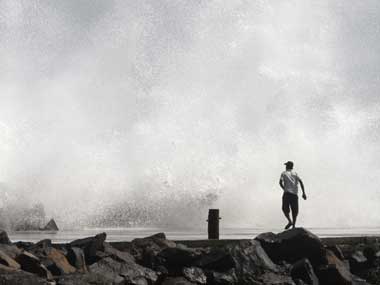By Sandeep Sahu It is basic human nature to compare things — people, places, events and even calamities — though such comparisons are often odious, misleading and even pointless. Thus, it was hardly a surprise that Cyclone Phailin was already being compared — full 24 hours before it is expected to hit the landmass near Gopalpur in south Odisha on Saturday evening — to Hurricane Katrina that devastated large parts of USA in 2005 on the one hand and the Super Cyclone that ravaged coastal Odisha in 1999. [caption id=“attachment_1168507” align=“alignleft” width=“380”]  Reuters[/caption] Even as the India Meteorological Department (IMD) maintains that it is a ‘very severe cyclonic storm’ with wind speeds reaching up to 220 km per hours and storm surges nearly three meters high, leading weather monitoring agencies in the world have charged the Indian weatherman with ‘underestimating’ the intensity of the cyclone. Both the Tropical Storm Centre in London and the Joint Typhoon Warning Centre of US Navy have forecast wind speeds could reach up to 315 km/hr on landfall, putting Pailin in the Category 5 storm - the most severe. Eric Holthaus, a US based meteorologist, has gone a step further and put it on par with Hurricane Katrina adding, for good measure, that it could be the ‘strongest storm ever measured in the Indian Ocean.’ There are others who are comparing it to the Super Cyclone in October 1999, which killed nearly 10, 000 people and caused extensive damage in coastal areas of the state. Interestingly, the comparisons are taking place despite the fact that nobody is really sure till today about the wind speed, which determines the intensity of a cyclonic storm, during the Super Cyclone. So high was the speed of wind that the anemometer installed at the IMD centres in Bhubaneswar and Paradip actually failed to record it. In the absence of any recording, it was assumed that wind speed must have reached or may be even crossed 300 km per hour. Sarat Chandra Sahu, Director of the IMD centre in Bhubaneswar, told Firstpost the machines now in use are much more advanced than the ones in use in 1999 and can record wind speeds of any intensity. But asked about the US Navy prediction, he says; “I cannot really say what models they are using or how they have arrived at the wind speed of 315 km/hr.” Interestingly, even while repudiating the comparison between current cyclonic storm and the Super Cyclone, IMD authorities, in their latest forecast, have predicted wind speed of 200-240 km/hr ‘gusting up’ to 240 km/hr, which puts Pailin firmly in the category of a Super Cyclone (220 km/hr and above). The Director of the Bhubaneswar IMD centre unwittingly hinted that the US Agency may have a point when he said; “They are free to say what they want. But we have a responsibility towards our people.” Activists believe if the IMD, in its anxiety not to spread panic, is underplaying the threat of Phailin, it is actually doing a great disservice to the people. “One of the major reasons for the huge casualty in 1999 was the fact that the people, especially in the seaside villages of Ersama in Jagatsinghpur district, simply refused to pay heed to the repeated warnings by the government to move out to safer places in time. ‘We have seen more than our fair share of cyclone,’ they would say and refuse to budge. Keeping that in mind, it is not such a bad thing if people get scared a little and evacuate on their own,” says Tapan Padhi, Director of National Institute for Development (NID), a Bhubaneswar based NGO. “It is always better to expect the worst and be prepared to face it than to be caught off-guard,” he says. Even as IMD is engaged in a battle of wits with international agencies, the state government has adopted the most pragmatic approach under the situation. “The wind speed being predicted is not much less than in 1999 and hence, we are treating it as a Super Cyclone,” Odisha’s Special Relief Commissioner PK Mohapatra says. Given the fact the IMD itself revised its forecast of wind speeds of 175-185 km/per hour given on Thursday to 210-220 km/hr by Friday, it is possible that it may ultimately upgrade the threat when the storm finally hits land sometime this (Saturday) evening. Once it does, all the squabbling over wind speed would become meaningless and the people would be left to pick up the pieces of their devastated lives.
It is basic human nature to compare things — people, places, events and even calamities — though such comparisons are often odious, misleading and even pointless.
Advertisement
End of Article
Written by FP Archives
see more


)

)
)
)
)
)
)
)
)



